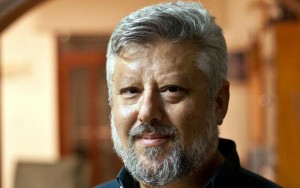The Study of International Law in American Law Schools: A Brief History
As I’ve discussed in other posts, international law has a fairly peripheral role in American legal education. Only eight schools require their students to complete a course on the subject, and the range of international electives tends to be quite limited. Wondering whether this is only a recent phenomenon or instead something with deeper roots, I did a little research into historical practice. It turns out that scholars have surveyed the state of international legal education in the United States multiple times over the course of the past century. By combining their work—including two particularly good pieces by Manley Hudson (1929) and William Bishop (1953)—with a recent survey of my own, we can gain at least a rough sense for how the curriculum has evolved over time. Here’s what I found:
First, international law had a role even in the Founding era. In 1779, for example, the law of nations was added to the instructional duties of the “moral professor” at William & Mary. In 1790, James Wilson devoted a “considerable part” of his lectures at the College of Philadelphia to the law of nations, while James Kent lectured on the subject at King’s College just a few years later. According to Hudson, “the law of nations had a recognized place in the pursuit of a legal education, and it formed a part of the learning of many of the better-educated lawyers” of the period.


 Well, I had very high hopes for being able to blog while in Israel and those were quickly dashed between the total lack of sleep and need to reflect on what we were seeing! So finally, now that we have been back for a week, I will start posting about the sights and visits that we had. We stopped over on the way and spent about 8 hours running around Vienna. This proved to be a terrific stop because we were able to link two different visits in Israel to what we saw in Vienna. We started at the Belvedere Museum in Vienna where the famous Klimt painting, The Kiss, is shown. Up until very recently, the Belvedere also housed a painting known as the Lady in Gold (seen above). And you can still see t-shirts and mugs bearing the likeness of this painting through downtown Vienna. But this painting is now longer there.
Well, I had very high hopes for being able to blog while in Israel and those were quickly dashed between the total lack of sleep and need to reflect on what we were seeing! So finally, now that we have been back for a week, I will start posting about the sights and visits that we had. We stopped over on the way and spent about 8 hours running around Vienna. This proved to be a terrific stop because we were able to link two different visits in Israel to what we saw in Vienna. We started at the Belvedere Museum in Vienna where the famous Klimt painting, The Kiss, is shown. Up until very recently, the Belvedere also housed a painting known as the Lady in Gold (seen above). And you can still see t-shirts and mugs bearing the likeness of this painting through downtown Vienna. But this painting is now longer there.